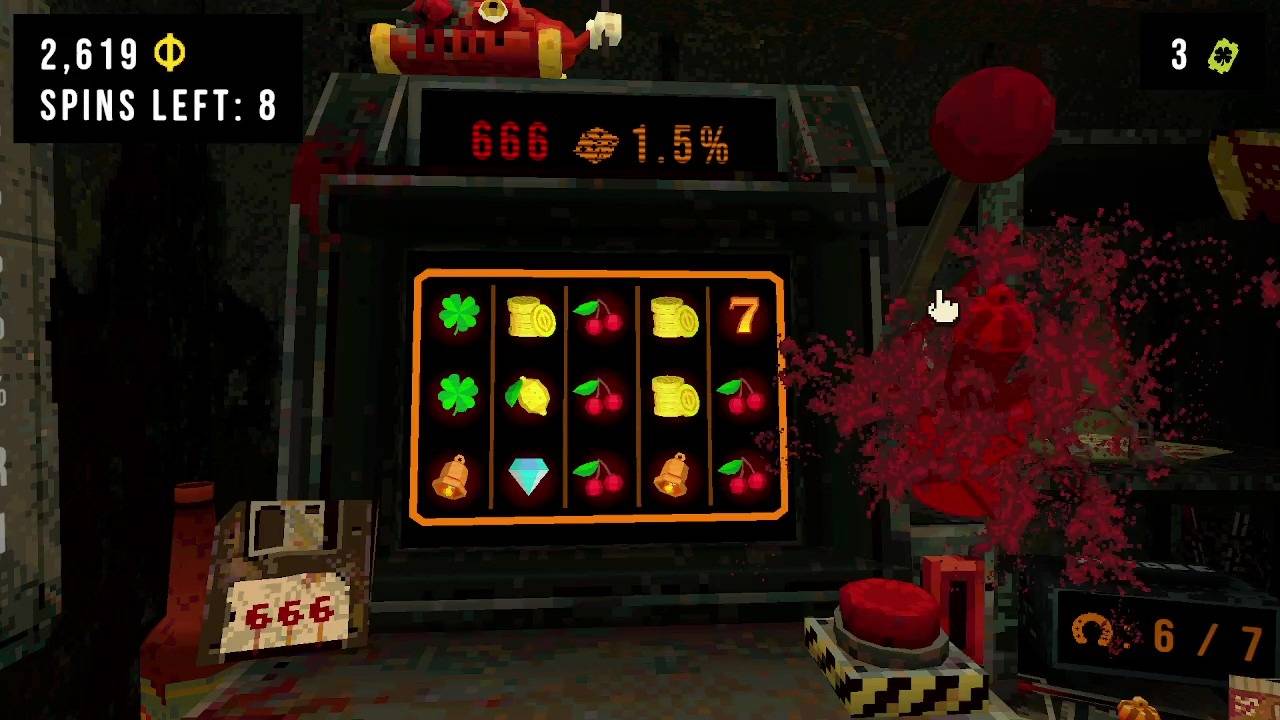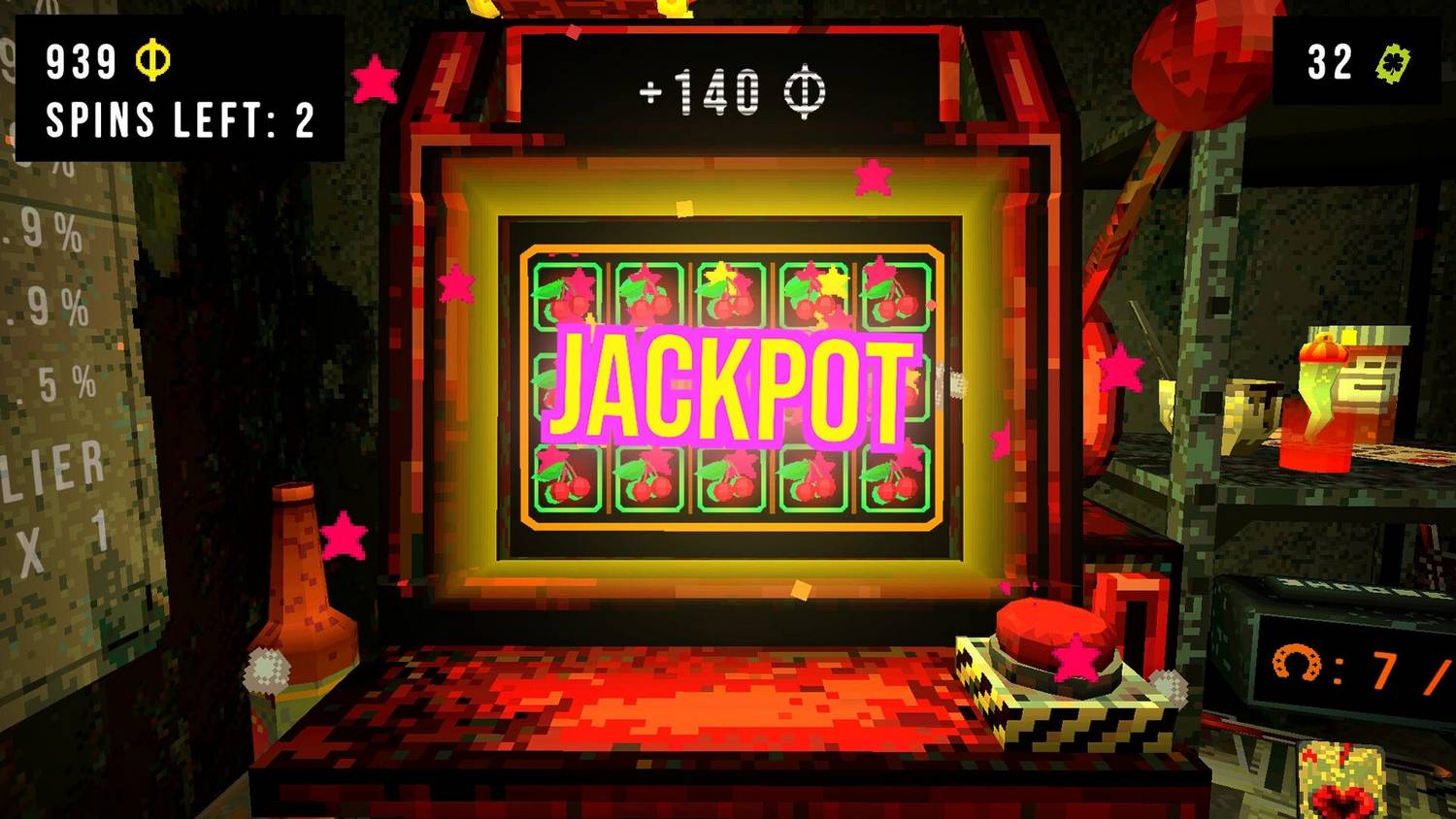The Slot Machine Nightmare: CloverPit’s Addictive Loop and Sinister Satire
Popular Now
 Roblox
Roblox
 Toca Boca World
Toca Boca World
 Valorant
Valorant
 Minecraft
Minecraft
 Warframe
Warframe
 CarX Street
CarX Street
 Among Us
Among Us
 Genshin Impact
Genshin Impact
 Fortnite
Fortnite
 God of War Ragnarök
God of War Ragnarök

CloverPit is the latest indie game to capture the zeitgeist, following in the successful, grim footsteps of titles like Buckshot Roulette and the highly influential deckbuilder, Balatro. From developer Panik Arcade, this roguelite satire plunges the player into a claustrophobic, rust-stained prison cell with a single, horrifying tool for survival: a demonic slot machine. The premise is as stark as it is cynical: a debt simulator where you must relentlessly gamble to pay off an ever-increasing deadline of coins, or literally drop into the pit below. This relentless, debt-fueled loop is where the game establishes its core message—a sharp, pointed capitalism critique wrapped in a deeply addictive, system-breaking roguelite game design.
 Gameplay: The Illusion of Control in a Rigged System
Gameplay: The Illusion of Control in a Rigged System
While the game’s aesthetic screams indie horror and its central mechanic mimics a slot machine, CloverPit is, at its heart, a strategic optimization puzzle. The developers are quick to clarify: “Our slot machine is designed to be broken and ultimately overcome, and will never ask you for real money!” This is the crucial twist that elevates it beyond mere replication.
- Debt and Deadline: Each round, you are given a monetary goal to deposit into the ATM. Fail to meet the deadline in your three allowed spins, and the run ends. The debt grows exponentially, mirroring the Sisyphean struggle of living under crushing economic pressure.
- Charms and Synergies: The true depth lies in the 150+ items and synergies known as “Charms.” Purchased with tickets earned from spins, these allow you to manipulate the odds. You can boost the chance of high-value symbols, increase multipliers on specific colors, or even gain protection from the dreaded “666” pattern that wipes your winnings. Mastering the synergies between these Charms is the key to creating game-breaking combos and achieving a “dazzling lucky run.”
- The ‘Luck’ System: The game provides a direct, albeit slow, path to a guaranteed jackpot. By filling a ‘Luck’ meter through specific actions, your next spin will result in a 15-symbol payout. This mechanic shifts the focus from pure chance to resource management and strategic build prioritization.
This intricate loop provides the high-octane satisfaction common to the best roguelite titles. Watching the numbers “go up,” as a carefully constructed Charms build turns a modest spin into a massive, life-saving payout, provides an unparalleled dopamine hit. This sense of fighting back and overcoming the rigged system is the game’s core strategic appeal.
The Cynical Punchline: Cashing in on Despair
The brilliance of CloverPit’s satire is undeniable. The claustrophobic cell, the endless, escalating debt, and the grotesque mechanical nature of the slot machine all perfectly capture the psychological toll of wage slavery and the relentless, inhumane demands of late-stage capitalism. The game forces the player to become the ultimate opportunist, a survivalist optimizing a system designed to crush them. However, this is where the conversation turns from critical praise to cultural unease.
The success of CloverPit, much like Balatro before it, highlights a growing trend in the indie game space: the monetization of existential dread. We are in an era where games that perfectly encapsulate the horrors of financial precarity—the constant pressure to perform and the randomness of fate—are becoming massive commercial hits. The irony is potent and, for some, uncomfortable:
- The anxiety of never meeting a financial deadline is the primary gameplay loop.
- The intoxicating rush of a major windfall—a momentary “escape” from debt—is the primary reward mechanism.
While developers are using the medium for powerful critiques of capitalism, the resulting products can feel like cathartic echo chambers. We purchase and play these games to find a sense of control over the very systems that govern and exploit us in the real world. The core enjoyment is derived from the satisfying feeling of “beating the system” within the safety of a digital environment. The high enjoyment of the game is intrinsically tied to the highly relatable nature of its core trauma—the sense of never getting ahead. This makes CloverPit a fascinating cultural object, one that demands a conversation about whether making addictive entertainment from our shared despair is truly satire or merely a sophisticated form of coping mechanism.
Verdict: A Must-Play, But the Message Lingers
CloverPit is an undeniable success. It delivers a deeply engaging, mechanically sound, and terrifyingly addictive roguelite experience. The sheer volume of content, from the 150+ Charms to the unlockable run modifiers, guarantees immense replayability and strategic depth. It is, without question, one of the most compelling and grimly beautiful indie horror releases of the year.
However, players should enter this world with an awareness of the bitter aftertaste. The game is a perfect reflection of a broken economic reality, and its brilliance lies in how well it translates that reality into a compelling loop. It’s an essential experience for fans of the genre, but one that may leave you wondering if our collective critique of the system is simply becoming another extremely profitable product within that very system.
CloverPit is available now on PC via Steam.









